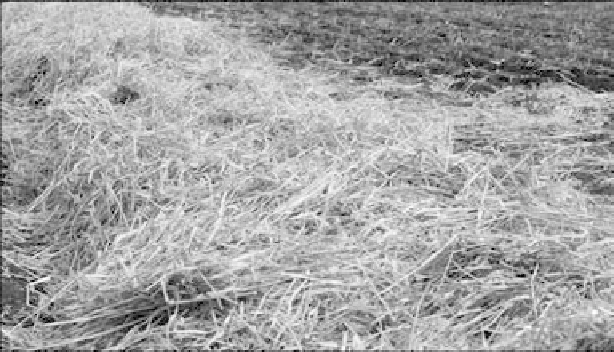Agriculture Reference
In-Depth Information
/
Plant-based mulches can feed the soil over time as they break down. While the mulch doesn't
get mixed into the soil like compost does, there is a small benefit for your plants.
/
Mulch helps moderate soil temperature so that your plants are cooler in the heat of summer,
and given some protection from frost in the late fall.
/
A mulched garden usually looks more attractive than an unmulched garden, especially with
plant-based mulches.
Now, before we discuss a few of the many items you can use as a mulch, there are a few things that
you should
not
do with mulch. Laying a thick layer of mulch over a cold ground in the early spring
can actually prevent the soil from warming up, so wait until the ground warms up a little bit before
laying down your mulch. The exception to that would be black plastic mulch, which can help heat
up the ground.
Applying mulch directly onto the stem of the plant, or trunk of the tree, can encourage the buildup
of moisture and invite diseases. To avoid this, just pile up the mulch under the leaves of the plant
so it isn't touching the stem of the plant.
There are so many materials, even if you only limit yourself to plant-based and biodegradable
materials, which can be used as mulches. And each has pros and cons.
Straw or hay.
This is what I like to use because I have access to a free source. Hay can bring in
weed seeds, but I've found that laying down at least 4 inches of mulch (and planting our vegetables
closer together) can help prevent most of the seeds from germinating. Hay allows air and water to
easily reach the soil and is easy to rake out of the way when needed. We use hay that isn't suitable
for feeding and is either peeled off the outside of the round bale, or has been discarded at the bot-
tom of the feeder after being picked over by the goats.
Straw makes an excellent organic mulch option. Make sure the source of your hay or straw hasn't been
treated with pesticides.
(Photo courtesy of Tim Sackton)














